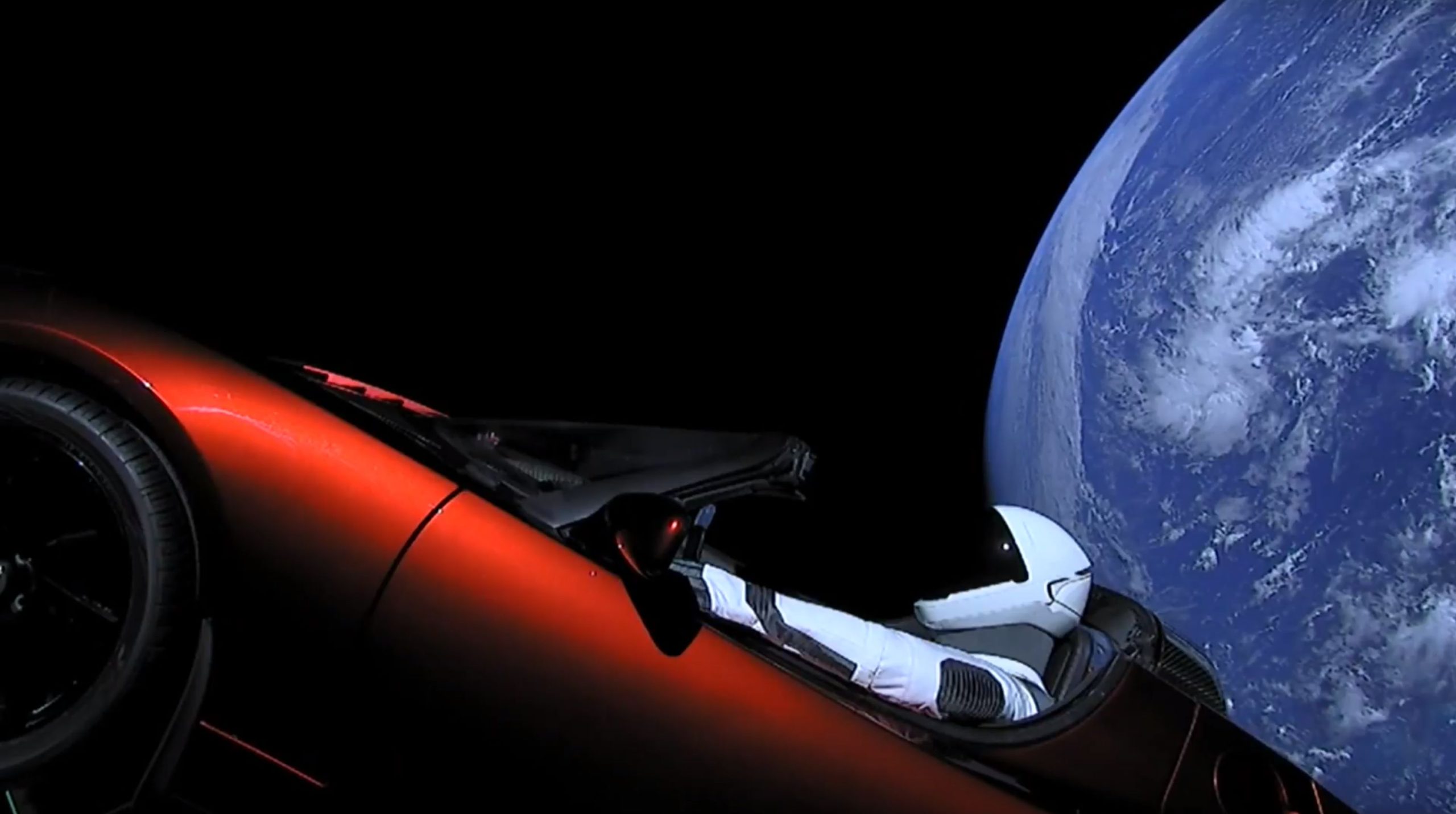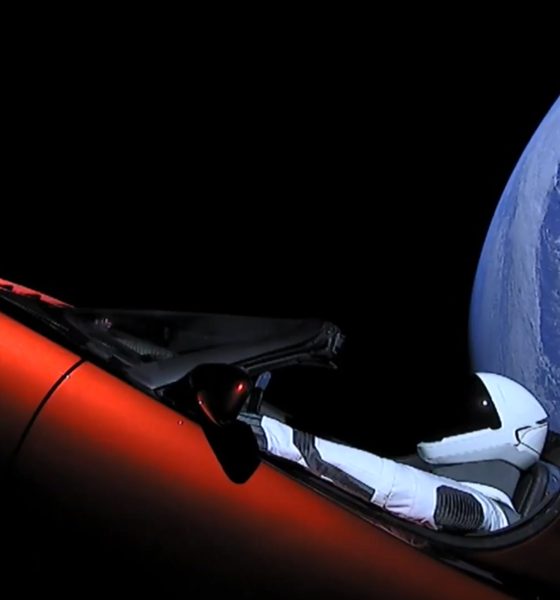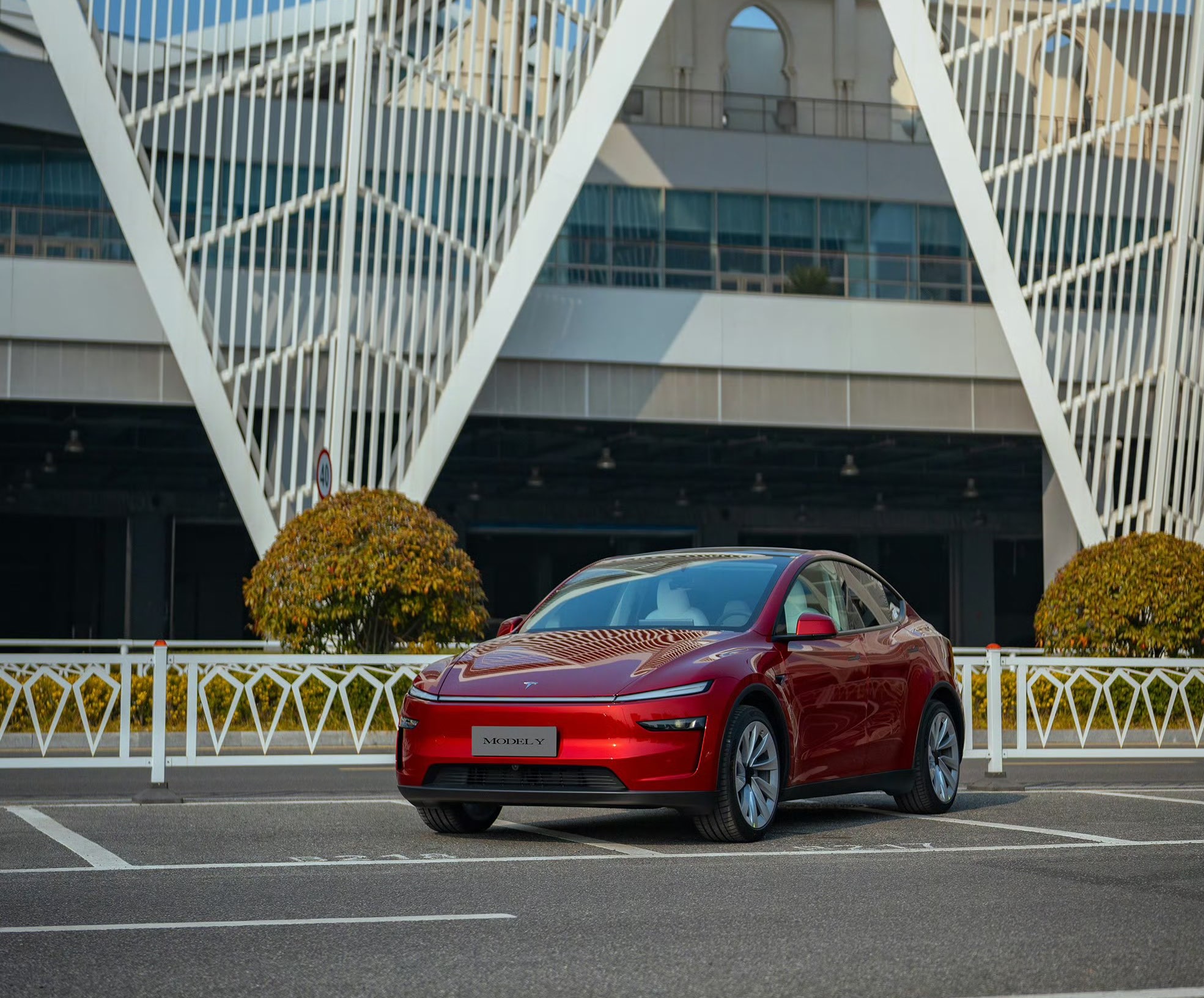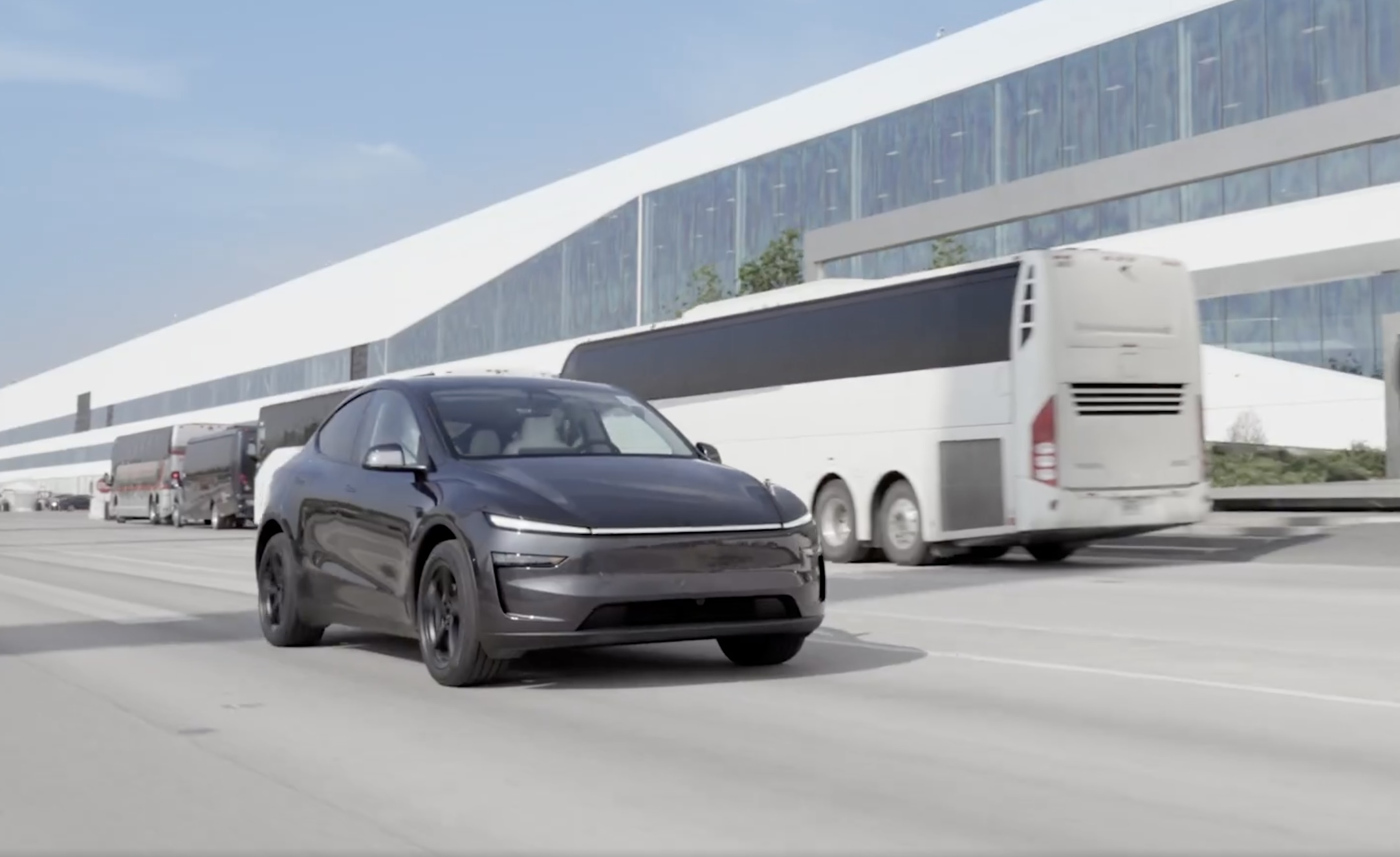

Investor's Corner
Tesla Aviation? Morgan Stanley says yes, and it could be worth $1,000 per share
Tesla (NASDAQ: TSLA) has already changed the automotive industry for the better through its development of industry-leading electric cars. However, the company’s work is far from over. While the automaker is still trying to figure out the next revolutionary breakthrough in EV development, the analysts at Morgan Stanley believe that Tesla will eventually expand its product line to aviation products. It could be worth big gains in the long run for shareholders.
In a note released earlier today, a team of Morgan Stanley analysts led by Adam Jonas brought along their thoughts for Tesla Aviation. Although Tesla is still working on EV development, Morgan Stanley made it clear that their expectations for the company are to eventually expand to aviation, working toward sustainable transportation in the air and not just the ground.
“In our view, the chance that Tesla does not ultimately offer products and services to the eVTOL/UAM (Electric Vertical Take-Off and Landing, and Urban Air Mobility) market is remote,” the note said. “The potential skills transferability and network adjacencies are too strong to ignore.”
Morgan Stanley on Tesla ??
“In our view, the chance that Tesla does not ultimately offer products and services to the eVTOL/UAM market is remote.”$TSLA pic.twitter.com/ALJ48GlXox
— David Tayar (@davidtayar5) July 15, 2021
Now while CEO Elon Musk has not specifically mentioned that Tesla will be involved in the development of all-electric air transport, he has hinted in the past that there should be more sustainable options for aviation. In October 2020, Musk Tweeted, “There should be a new supersonic jet, this time electric.”
While speculation persists that Tesla could be involved in the eventual development of these products, the company has never explicitly commented on their involvement in the possibility. In all honesty, though, what company would be better suited to develop these types of products?
Sigh … there should be a new supersonic jet, this time electric
— Elon Musk (@elonmusk) October 25, 2020
Morgan Stanley agrees with this assessment, indicating that the company’s potential in the e-aviation sector would be monumental. While companies in the aviation sector have been mentioned in the past, Tesla is being left out of this conversation. Why? “Quite simply, it is because Elon Musk hasn’t really talked about it. In fact, he’s barely mentioned it.”
The team of analysts at the Wall Street-based firm also mention that Musk has been dismissive of the “flying car genre” because “advancing the state of 3-dimensional transport via tunnels or space” is the prioritized task at the moment. But this could ultimately change down the road, Morgan Stanley says, by 2050. “We’ll have Teslas on our roads, underground in tunnels…on Mars. But not in Earth’s skies? Well…we’re not convinced.”
“We have run a range of scenarios flexing market share and EBITDA margin assumptions based on our global eVTOL/UAM model (a $9tn TAM by 2050…yes….2050). Discounted back to the present on a per-share basis, we’re coming up with potential preliminary outcomes on the order of $100 per Tesla share on the low-end to approximately $1,000 per Tesla share (or more) on the high end,” the note said. The current $900 price target the firm has for Tesla does not include its potential participation in the aviation sector.
Tesla plans to bring some “flying” products to the market soon, especially with the Roadster that Musk has planned to install a SpaceX package to allow short-term hovering. Purely speculative by Morgan Stanley, their predictions of a Tesla aviation business are lofty. Still, it’s not completely out of the question that the company could eventually expand its expertise into other sectors that have to do with transportation.
Disclosure: Joey Klender is a TSLA Shareholder.
Don’t hesitate to contact us with tips! Email us at tips@teslarati.com, or you can email me directly at joey@teslarati.com.

Investor's Corner
Mizuho keeps Tesla (TSLA) “Outperform” rating but lowers price target
As per the Mizuho analyst, upcoming changes to EV incentives in the U.S. and China could affect Tesla’s unit growth more than previously expected.

Mizuho analyst Vijay Rakesh lowered Tesla’s (NASDAQ:TSLA) price target to $475 from $485, citing potential 2026 EV subsidy cuts in the U.S. and China that could pressure deliveries. The firm maintained its Outperform rating for the electric vehicle maker, however.
As per the Mizuho analyst, upcoming changes to EV incentives in the U.S. and China could affect Tesla’s unit growth more than previously expected. The U.S. accounted for roughly 37% of Tesla’s third-quarter 2025 sales, while China represented about 34%, making both markets highly sensitive to policy shifts. Potential 50% cuts to Chinese subsidies and reduced U.S. incentives affected the firm’s outlook.
With those pressures factored in, the firm now expects Tesla to deliver 1.75 million vehicles in 2026 and 2 million in 2027, slightly below consensus estimates of 1.82 million and 2.15 million, respectively. The analyst was cautiously optimistic, as near-term pressure from subsidies is there, but the company’s long-term tech roadmap remains very compelling.
Despite the revised target, Mizuho remained optimistic on Tesla’s long-term technology roadmap. The firm highlighted three major growth drivers into 2027: the broader adoption of Full Self-Driving V14, the expansion of Tesla’s Robotaxi service, and the commercialization of Optimus, the company’s humanoid robot.
“We are lowering TSLA Ests/PT to $475 with Potential BEV headwinds in 2026E. We believe into 2026E, US (~37% of TSLA 3Q25 sales) EV subsidy cuts and China (34% of TSLA 3Q25 sales) potential 50% EV subsidy cuts could be a headwind to EV deliveries.
“We are now estimating TSLA deliveries for 2026/27E at 1.75M/2.00M (slightly below cons. 1.82M/2.15M). We see some LT drivers with FSD v14 adoption for autonomous, robotaxi launches, and humanoid robots into 2027 driving strength,” the analyst noted.
Investor's Corner
Tesla stock lands elusive ‘must own’ status from Wall Street firm

Tesla stock (NASDAQ: TSLA) has landed an elusive “must own” status from Wall Street firm Melius, according to a new note released early this week.
Analyst Rob Wertheimer said Tesla will lead the charge in world-changing tech, given the company’s focus on self-driving, autonomy, and Robotaxi. In a note to investors, Wertheimer said “the world is about to change, dramatically,” because of the advent of self-driving cars.
He looks at the industry and sees many potential players, but the firm says there will only be one true winner:
“Our point is not that Tesla is at risk, it’s that everybody else is.”
The major argument is that autonomy is nearing a tipping point where years of chipping away at the software and data needed to develop a sound, safe, and effective form of autonomous driving technology turn into an avalanche of progress.
Wertheimer believes autonomy is a $7 trillion sector,” and in the coming years, investors will see “hundreds of billions in value shift to Tesla.”
A lot of the major growth has to do with the all-too-common “butts in seats” strategy, as Wertheimer believes that only a fraction of people in the United States have ridden in a self-driving car. In Tesla’s regard, only “tens of thousands” have tried Tesla’s latest Full Self-Driving (Supervised) version, which is v14.
Tesla Full Self-Driving v14.2 – Full Review, the Good and the Bad
When it reaches a widespread rollout and more people are able to experience Tesla Full Self-Driving v14, he believes “it will shock most people.”
Citing things like Tesla’s massive data pool from its vehicles, as well as its shift to end-to-end neural nets in 2021 and 2022, as well as the upcoming AI5 chip, which will be put into a handful of vehicles next year, but will reach a wider rollout in 2027, Melius believes many investors are not aware of the pace of advancement in self-driving.
Tesla’s lead in its self-driving efforts is expanding, Wertheimer says. The company is making strategic choices on everything from hardware to software, manufacturing, and overall vehicle design. He says Tesla has left legacy automakers struggling to keep pace as they still rely on outdated architectures and fragmented supplier systems.
Tesla shares are up over 6 percent at 10:40 a.m. on the East Coast, trading at around $416.
Investor's Corner
Tesla analyst maintains $500 PT, says FSD drives better than humans now
The team also met with Tesla leaders for more than an hour to discuss autonomy, chip development, and upcoming deployment plans.

Tesla (NASDAQ:TSLA) received fresh support from Piper Sandler this week after analysts toured the Fremont Factory and tested the company’s latest Full Self-Driving software. The firm reaffirmed its $500 price target, stating that FSD V14 delivered a notably smooth robotaxi demonstration and may already perform at levels comparable to, if not better than, average human drivers.
The team also met with Tesla leaders for more than an hour to discuss autonomy, chip development, and upcoming deployment plans.
Analysts highlight autonomy progress
During more than 75 minutes of focused discussions, analysts reportedly focused on FSD v14’s updates. Piper Sandler’s team pointed to meaningful strides in perception, object handling, and overall ride smoothness during the robotaxi demo.
The visit also included discussions on updates to Tesla’s in-house chip initiatives, its Optimus program, and the growth of the company’s battery storage business. Analysts noted that Tesla continues refining cost structures and capital expenditure expectations, which are key elements in future margin recovery, as noted in a Yahoo Finance report.
Analyst Alexander Potter noted that “we think FSD is a truly impressive product that is (probably) already better at driving than the average American.” This conclusion was strengthened by what he described as a “flawless robotaxi ride to the hotel.”
Street targets diverge on TSLA
While Piper Sandler stands by its $500 target, it is not the highest estimate on the Street. Wedbush, for one, has a $600 per share price target for TSLA stock.
Other institutions have also weighed in on TSLA stock as of late. HSBC reiterated a Reduce rating with a $131 target, citing a gap between earnings fundamentals and the company’s market value. By contrast, TD Cowen maintained a Buy rating and a $509 target, pointing to strong autonomous driving demonstrations in Austin and the pace of software-driven improvements.
Stifel analysts also lifted their price target for Tesla to $508 per share over the company’s ongoing robotaxi and FSD programs.









